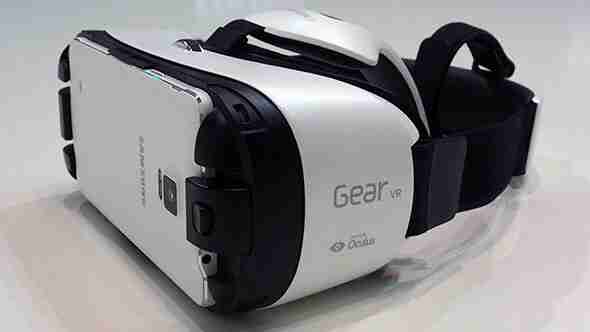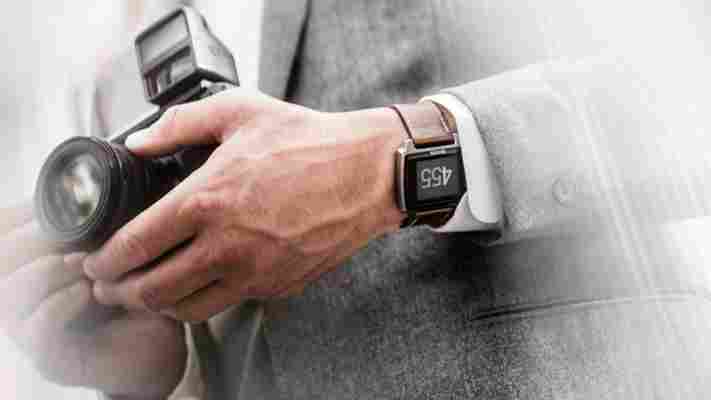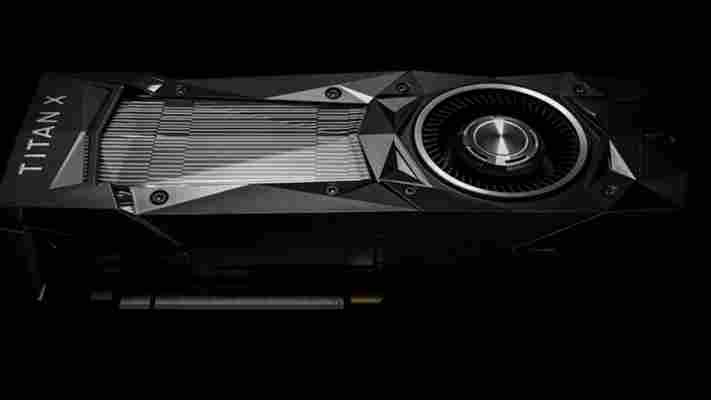Samsung unveiled an updated version of its Gear VR headset for the Galaxy S6 and S6 Edge this week at Mobile World Congress in Barcelona. I tested out the updated device to see what’s new.

As with the original , you insert your phone into the device so it can use its screen, CPU and GPU. While the Galaxy S6 has a 2560 x 1440 pixel resolution like the Galaxy Note 4 , its screen is a lot smaller, meaning the pixels are more tightly packed.
The difference is slight if you were to compare the two phones side by side, but once the S6 is inside the Gear VR, the difference in viewing quality is glaringly obvious. Images appear crisper and sharper.


A big change with the new Galaxy VR is the ability to adjust the focus, which makes it a lot easier to tailor viewing to suit your vision. I usually wear glasses and they wouldn’t fit under the headset, but I was able to set the dial on the top to its shortest setting so I didn’t have to strain my eyes.
The update has a sleeker design than the previous version and Samsung says it’s 15 percent lighter. A noticeable design change from the original is that your phone is now visible while inserted in the headset.
Aesthetically the Gear VR still resembles a head brace of sorts, with straps and parts that go around the sides and over the top of your head. It’s a bit of a production job to get it on and fitted in place.
While the original Gear VR had a tendency to overheat, the new edition remained relatively cool despite having been used for demos before me.
The updated device uses the same magnifying lenses as its predecessor, allowing small images that only take up a section of your phone’s screen to expand to fill your entire view.
The quality and smoothness of its imagery is the Gear VR’s main advantage over competitors in my opinion. The smaller screen results in smooth images. When you move your head, the motion feels seamless and immersive.
All in all, the new headset seems well on its way to being the most consumer-friendly option on the market, and with the new Oculus powered app store , it feels like Samsung is really pushing to make virtual reality a viable consumer option.
The company hasn’t confirmed a release date or price for the new version. However, the original Gear VR retails for around $200 and the new version is expected to be similarly priced.
Read next : Samsung Announces Galaxy S6 and S6 Edge
Photo credit: Oculus VR
Basis launches a titanium fitness tracker, adds Apple HealthKit and Google Fit integration
Fitness trackers can provide a lot of useful health metrics to help you stay in shape and look good, but lets face it: most of them are designed to look more utilitarian than stylish.

Basis is looking to change that with a new $299 Titanium Edition of its Peak fitness tracker, a limited-time model available from today . It’s not just a fancy name, the tracker’s shell is actually made out of titanium, and it comes with a cognac (caramel brown) leather strap made by Horween . That’s the same tannery that creates the Moto 360 ‘s great bands.
Though the internals on the Titanium Edition are exactly the same – its sensors track your heart rate, sleep, perspiration and skin temperature – Basis says the titanium edition is more resistant to damage, but still lightweight. While still a bit chunky, the metal certainly makes it look classier, in line with what Pebble did with the original Pebble Steel .
The cognac strap will only be available with the Titanium Edition, but for everyone else Basis is introducing five leather straps in black, grey, caramel, khaki, and light pink colors, which will each cost $50. In a thoughtful move, a silicone strap is still included with the Titanium Edition so you don’t damage your fancy leather one when you start sweating.
The software side of things is also seeing some changes with an update to the Basis App being made available today. Most notably, it will now sync data with Apple HealthKit and Google Fit , so it can feed data to a variety of fitness apps.
The update also brings along the new Basis Peak Playground, which lets users test experimental features and provide feedback to the product team before a wider release. One feature, for example, let you celebrate your exercise with a post-workout selfie.
Another update to the tracker’s firmware, available May 20, will add stopwatch functionality, as well as implement improved heart tracking algorithms.
Though smartwatches are becoming better health tools, dedicated fitness trackers can fit more powerful sensors and still tend to provide more accurate metrics. The Titanium Edition should at least provide a more compelling option for fitness buffs who want something that will look better with a suit.
➤ Basis Peak Titanium Edition [Basis]
Macs are now compatible with Nvidia’s most powerful graphics cards
I wasn’t sure it was ever going to happen: Nvidia is bringing compatibility for Pascal-generation graphics cards to the macOS, starting with the just-announced Titan Xp . The rest of the Pascal series cards will follow later this month.

It’s a pretty big deal for Mac enthusiasts. Apple has favored AMD’s GPUs for several years now, but enterprising users sometimes install Nvidia cards onto their Macs for greater graphics performance.
Though most of what Apple makes doesn’t allow for internal upgrades, the pre-2013 Mac Pro has room for an upgraded graphics card, and you can add an external GPU enclosure – like the Razer Core – to the newest MacBook Pros by using the Thunderbolt 3 port.
And then, of course, are those who have built a hackintosh , unencumbered by Apple’s silly limitations.
With support for Pascal-series cards, Mac users now have access to the most powerful graphics cards currently available (by a huge margin). Not just a boon for gamers (macOS is hardly the most gaming-friendly OS, after all), it’s a welcome upgrade for anyone who works with complex 3D graphics, as well as high-end video production, where GPU acceleration leads to faster renders and smoother previews.
The timing is likely no coincidence. Apple just announced a spec boost for its current Mac Pro (before redesigning the computer altogether next year), which includes updated AMD graphics. Meanwhile, Microsoft just announced the specs for its upcoming Project Scorpio Xbox . That uses AMD graphics, so maybe Nvidia is trying to stick it to Microsoft a little as well.
Of course, the fact that it took so long to get Pascal to work on the Mac in the first place is worth acknowledging – if you want support for the latest and greatest graphics, macOS probably isn’t for you. But considering Apple is promising its next Mac Pro will be much more upgradeable than the current generation, there might be some hope after all.
Either way, AMD better hurry up with Vega .
